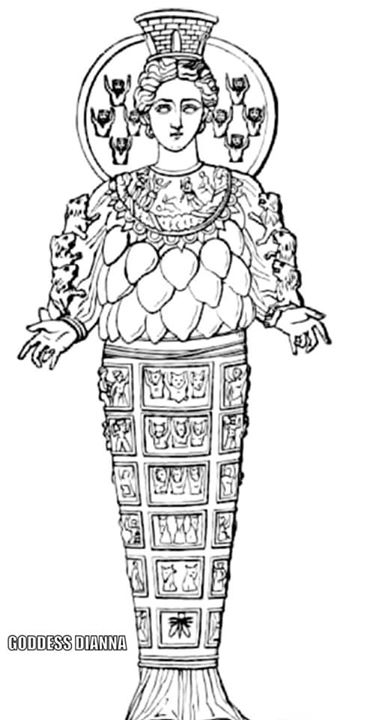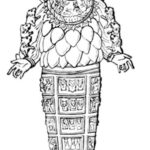
Christianity overcoming Greco-Roman theology
In the first century church, there was a constant battle to overcome what was formerly accepted in mythology with the truth of the good news (gospel of Christ). One example of this was the Temple of Artemis, also known as the Temple of Diana, in Ephesus.
The Temple was in modern day Turkey where two major deity, Artemis (Greek) and Diana (Roman), were worshipped. Artemis was a virgin and was the goddess of the hunt. Diana came to have a humanistic form only after the rise of Roman power over the Greeks and was then given the image you see covered with breasts. Diana was the goddess of fertility and the breasts signified her motherhood of the living.
If we fast forward to the early Christian church, many in Ephesus come to the saving knowledge of Christ. However, they had for centuries been mixing sex with their religion. While they were no longer worshipping at the temple of Diana, there was still the matter of the temple harlots that were carrying on the former lifestyle! The Apostle Paul dealt uniquely with the church in Ephesus and its women because of this.
The study of scripture using a method called Historical Theology at times aids understanding from scripture what is not plainly stated but was well known by the subject. Historical Theology Traces the history of the development of doctrinal interpretation. It involves the study of church history. In some cases where scriptures appear to be in conflict, understanding these historical/cultural facts bring incredible clarity. Paul dealt swiftly and firmly with the Ephesian church because of rampant practices unique to them. It is for this reason his dealing with the women in regard to teaching men (1Timothy 2:12) was not repeated in every church where Paul was apostle. It wasn’t needed.
Today, many out of ignorance would take the passage in Timothy as a blanket precedent to put women on the sidelines forever. This would be a colossal failure! The gospel radically altered the position of women, elevating them to a partnership with men unparalleled in first-century society. The following list is of first-century women ministers and church leaders mentioned in the New Testament: Philip’s daughters (Acts 21:9), Priscilla (Acts 18:26; Rom. 16:3-5, etc.), Phoebe (Rom. 16:1-2), Junia (Rom. 16:7), possibly Chloe (1 Cor. 1:11), Euodia and Syntyche (Phil. 4:2-3), Nympha (Col. 4:15), Apphia (Phlm. 2), the elect lady (2 John 1), the chosen sister (2 John 13), and probably Lydia (Acts 16:40), etc. a careful study shows these women operating in each of the five fold ministry gifts! “It was He who gave some to be (1) apostles, some to be (2) prophets, some to be (3) evangelists, and some to be (4) pastors and (5) teachers…” Ephesians 4:11


Comments